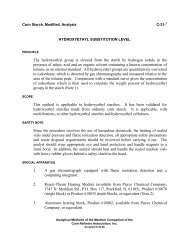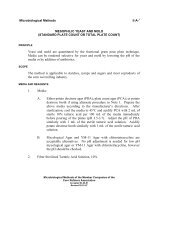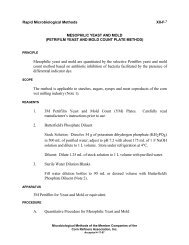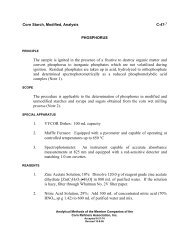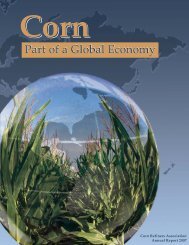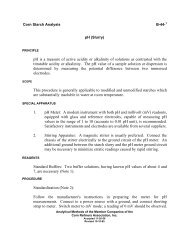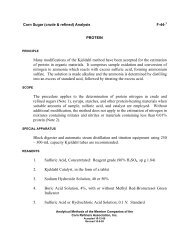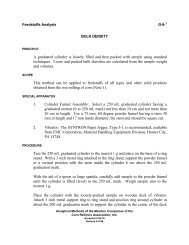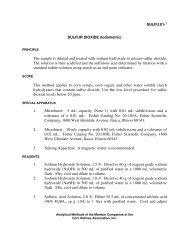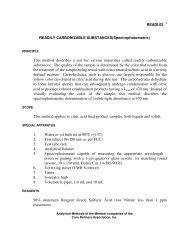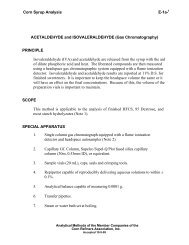Methods most commonly used for estimation of aldose-type sugars ...
Methods most commonly used for estimation of aldose-type sugars ...
Methods most commonly used for estimation of aldose-type sugars ...
You also want an ePaper? Increase the reach of your titles
YUMPU automatically turns print PDFs into web optimized ePapers that Google loves.
Corn Sugar (crude & refined) Analysis F-22- 3DEXTROSE EQUIVALENT ⎯ continuedCALCULATION% Reducing Sugars (as is, calc.as dextrose)=(500 mL)(0.1200)(100)(Sample Titer, mL)(Sample Wt., g)Dextrose Equivalent=(% Reducing Sugars )(100)% Dry SubstanceNOTES AND PRECAUTIONS1. The Association <strong>of</strong> American Feed Control Officials defines starchmolasses as "the by-product <strong>of</strong> the manufacture <strong>of</strong> dextrose from starchderived from corn or grain sorghums in which the starch is hydrolyzed byuse <strong>of</strong> enzymes and/or acid."2. Fehling's Solution in mixed <strong>for</strong>m is relatively unstable but may be retainedup to 1 week if standardization is confirmed be<strong>for</strong>e using.3. In the analysis <strong>of</strong> refined <strong>sugars</strong>, use 3 g <strong>of</strong> sample dry substance. For othersample <strong>type</strong>s, including starch molasses, calculate approximate sampleweight using the following <strong>for</strong>mula:Sample Weight=(3 g)(100)(100)(Anticipated D.E.)(% Dry Substance)Concentration should be such that sample titer is near 20 mL, but shouldnot exceed limits <strong>of</strong> 15 and 25 mL. Inter- and intralaboratory precision isimproved by adjusting all sample concentrations to provide titers between19 and 21 mL.4. When approaching the end point, allow about 5 secs. reaction time betweenadditions <strong>of</strong> sample solution.



